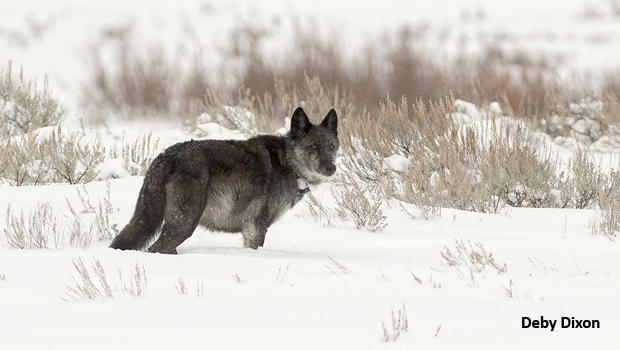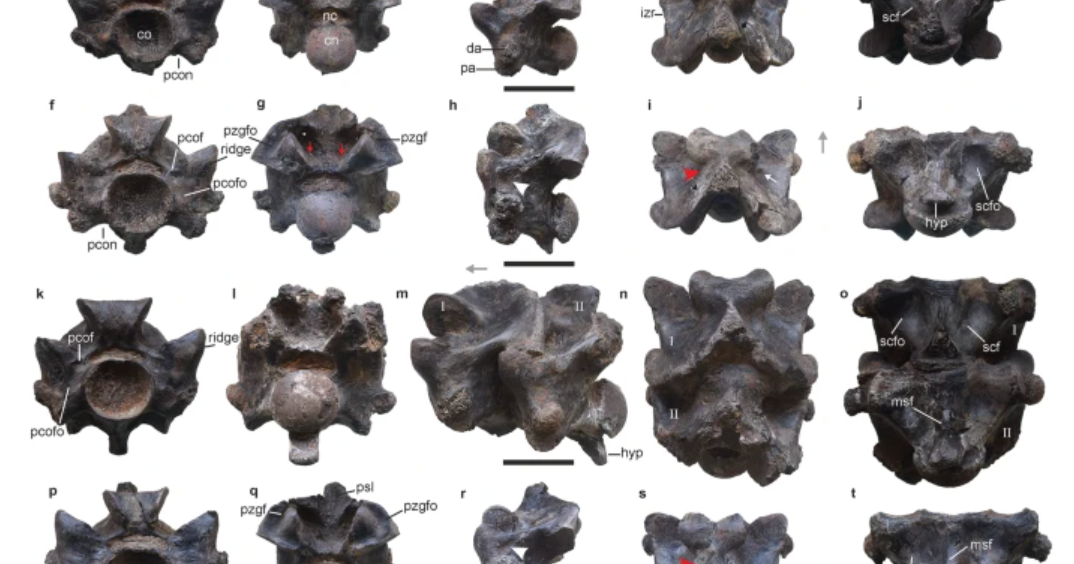Nature up close: Spitfire, the little wolf that could
By "Sunday Morning" contributing videographer Judy Lehmberg.
Wolf lovers the world over are grieving the loss of yet another famous wolf. This time it is one known as "926." I've never known a wolf who I felt epitomized more succinctly what Aldo Leopold meant when he wrote "We reached the old wolf in time to watch a fierce green fire dying in her eyes," almost 70 years ago in his seminal work, "A Sand County Almanac." After watching her for almost seven years, I know that fire comes not from being the biggest, toughest wolf in the valley but simply from determination.
And I wonder if that hunter ever saw those eyes, or knew anything about her life, her loses, and the struggles she overcame just to survive.
Wolves are protected in Yellowstone National Park but if they walk over the invisible line that is the park boundary they can be legally shot during a trophy hunt in Montana and Wyoming. Wolves that have become habituated to humans in Yellowstone are suddenly fair game if they step over that line.
Some researchers question the wolf hunt on the basis of economics alone. Simply put, a wolf is worth more money alive than dead. It is impossible to put a dollar figure on a life, but in the case of wolves who have been persecuted and vilified for centuries, it is practical to do so. In the words of a wildlife science professor, many people have "The Little Red Riding Hood Syndrome." The big, bad wolf is going to get you, or your sheep or cattle.
Depending on the source, Yellowstone wolves are worth a minimum of $35 million each year, the amount of money generated by tours led by wolf experts. But that doesn't take into account the amount of money those tour participants spend on lodging, food, rental cars, etc. Nor does it include the money that people who come to Yellowstone to see wolves without hiring an expert guide spend. That number varies, but is currently estimated to be over $400 million a year.
The number of wolves in Yellowstone changes from year to year, but that is about $4,000,000 per wolf.
As for 926, she was born to Yellowstone royalty. Her great-great-grandparents were 9 and 10, two of the original wolves reintroduced into Yellowstone in 1995. Her great-grandparents were 21 and 42. Her parents were 755 and '06. Both 21 and '06 are Yellowstone wolf legends, and '06 died the same way her daughter did, by a bullet during a "trophy" hunt.
She was born, along with four brothers and sisters in April 2011, into the Lamar Canyon pack. Her dad was 755, a wonderful provider and loyal mate to '06 who had already become a legend for her strength and hunting ability. As a yearling, she became known as the "Small Black Lamar Female," until people watched her, not surprisingly, unsuccessfully chase a bison all by herself and some other bold acts. Then she became "Spitfire." She lived up to that name her entire life.
She had bright, shining green eyes, but Spitfire was thin, with coarse black fur, large goofy-looking ears, and a thin neck. She wasn't a pretty wolf, but she made up for that in personality. After she was collared at the age of two-and-a-half, she became 926. It was possible to recognize that neck and ears through a scope from miles away. There was no other wolf like her. She was the little wolf that tried, and tried, and tried.
Her mother, '06, was one of the strongest female wolves in Yellowstone, a good protector and an excellent provider. She could bring down an adult elk by herself and did so on more than one occasion, but in December 2012, she was legally shot after she wandered outside the park during wolf hunting season. The rest of the pack lost its cohesiveness without '06, and some of them wandered outside the park again. In 2013, 926 and her sister returned to the Lamar Valley and found a new male to settle down with, 925. The pack had two pups that year but neither survived.
925 produced seven pups in 2014, six of which survived. In early 2015 the pack traveled west, out of their territory, looking for elk. They did find, and kill, a specimen, but as they returned they also found the Prospect Peak pack – 12 big wolves who were not pleased to see "foreigners" in their territory. 926 was heavily pregnant at the time. Her mate, 925, stood his ground, allowing 926 to escape. The Prospects attacked. 925's two sons turned around and ran back to help their dad, drawing some of the Prospects away from him and allowing him to escape. He did escape, but he didn't survive. It is believed, on the basis of tracks found around his body, that 926 and her pups came back to see him one last time before he died, even though they knew how dangerous it was for them.
Now 926 was left with just her not-quite-yearling pups who were not yet capable hunters – and she was pregnant. That meant there was no one to provide for her and her new pups when they were born.
Then, something that can only happen in wolf world occurred. Four of the Prospect Peak wolves came calling, the very ones that had helped kill her mate, but this time it was a friendly call. Her pups disappeared into the woods, and she turned on the charm. After much tail-wagging she won them over, and 992 became her new alpha male and provider, along with three of his pack mates.
926 gave birth to five pups in 2015, three of which survived, but by the end of 2015 most of the pack had severe mange. Mange is caused by a mite that is not itself deadly, but because it causes intense itching and scratching, wolves lose so much hair they can't sit or lay in snow without freezing to death. Although it is a naturally-caused infection, it may not be native to Yellowstone, as it was intentionally introduced to the park in 1905 to aid in the then-ongoing wolf eradication.
Within a year, by the end of 2016, all of the four original Prospects were dead, including the alpha 992, as were all of the pups. In 2017, 926 and her only remaining daughter, Little-T, found two males from outside Yellowstone. One, 949 became the alpha male. Both 926 and her daughter appeared pregnant in the spring of 2017 but no pups were ever found. In August of 2017 it was obvious that something was wrong with 949. He sat near a bison carcass for days with what many thought was a head injury. Finally, after ten days he died. His body was later examined and he was found to have died of canine distemper. 949 was the third alpha male 926 had lost.
Then 926, looking very thin herself, left the pack and went east for a while, leaving Dot and Little-T together. Then, one day, 926 returned and accepted a subordinate role to her daughter. Both females denned but no one saw any puppies. Soon after that 926's collar began sending out a mortality signal, so 926 was feared dead. But, surprise! She wasn't dead, she was out running around Soda Butte Valley, without a collar. She had just gotten so thin her collar fell off.
In late October of this year, Dot, Little-T and 926 were seen with four black pups. They did have pups, they had just kept them hidden! Wolf lovers the world over celebrated their success. Finally, the Lamar Canyons had a chance to succeed. There were four surviving pups and 926 was there to be a part of that. The break we had all been wishing for, after watching 926 experience one setback after another and get right back up and try again, was finally happening.
Over the Thanksgiving holiday, many wolf watchers spent hours looking for the Lamar Canyons and had only brief sightings of them on a hill Thanksgiving Day.
Two days later, on November 24, 2018, 926 was legally shot and killed outside Yellowstone. She could overcome the loss of three mates, most of her puppies, mange, and her alpha status, but she couldn't overcome a bullet. But she never, ever gave up.
Judy Lehmberg is a former college biology teacher who now shoots nature videos.
See also:
- Judy Lehmberg (Official site)
- Judy Lehmberg's YouTube Channel
To watch extended "Sunday Morning" Nature videos click here!






